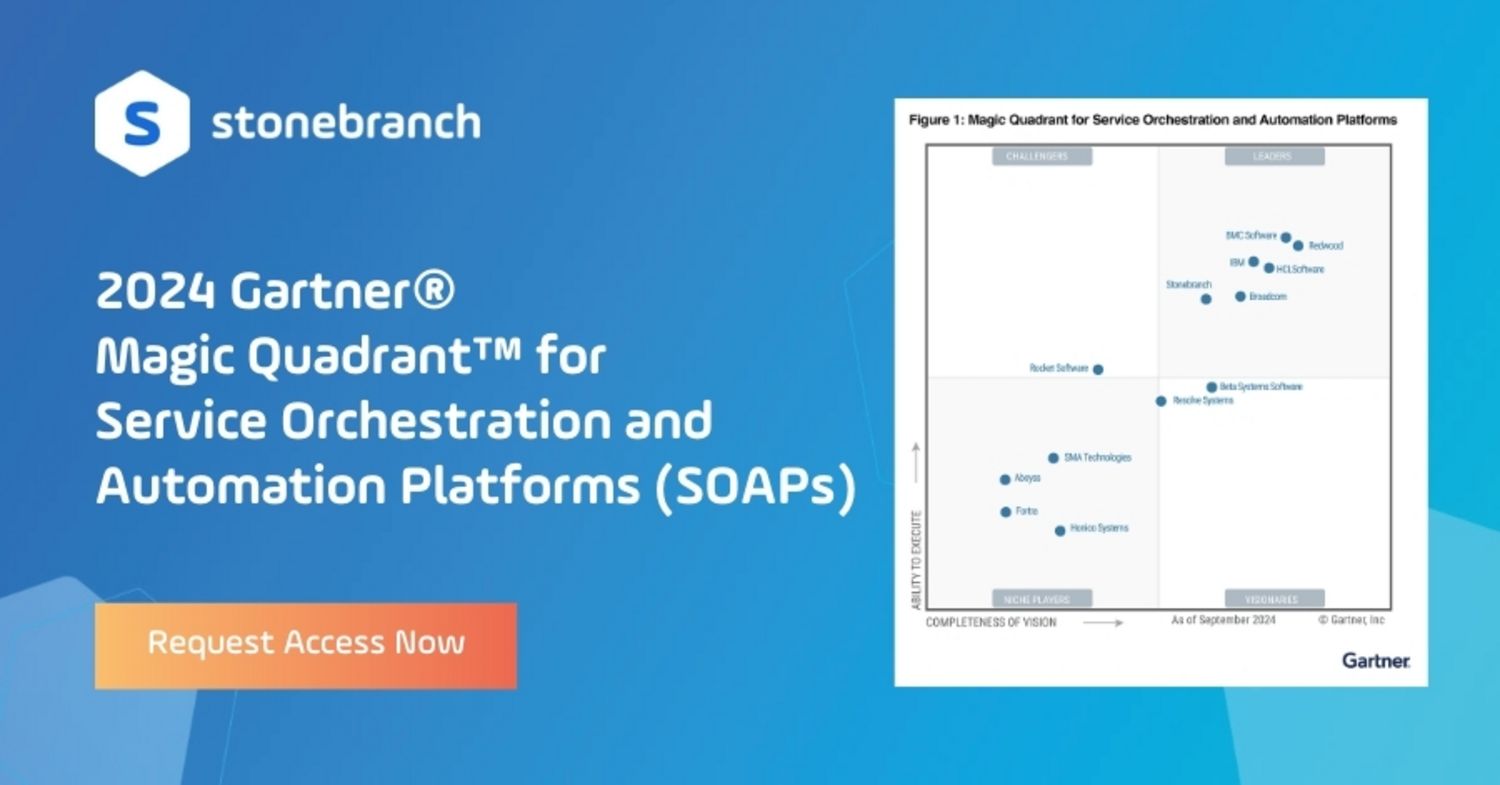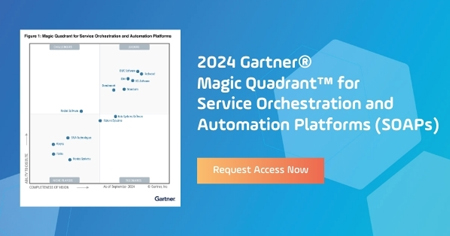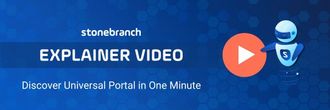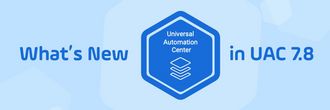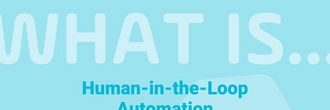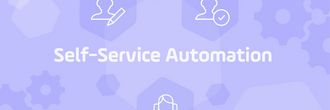Overcome Automation Tool Sprawl and Unlock Efficiency with a SOAP
Streamline automation tool sprawl to reduce costs and improve agility — unify siloed tools into a single, integrated solution for your business processes.
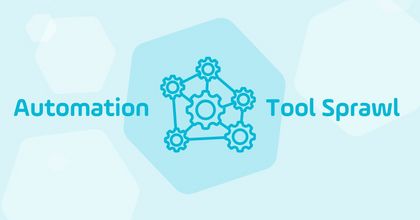
As the footprint of automation grows within enterprises, the number of tools deployed to enable it has skyrocketed. This evolution is exciting in many ways, but it comes with a hidden cost: tool sprawl.
At Stonebranch, we’ve seen this trend unfold across industries. Automation — once limited to job scheduling or simple workloads — now spans cloud environments, infrastructure, DevOps, DataOps, and enterprise applications. Each area brings its own set of specialized tools, often selected to meet the immediate needs of individual teams or organizational units. But in the pursuit of speed and efficiency, this approach has created new problems.
The Challenge of Automation Tool Sprawl
The rise of tool sprawl presents a significant challenge to IT teams. In many cases, organizations are finding that they now need to manage numerous automation platforms, each with overlapping functions and unique requirements for support, security, and compliance. The impact of this reality goes beyond operational complexity. The cost of ownership for each of these tools adds up quickly, especially when they are critical to supporting business processes.
For years, IT organizations have worked to minimize and standardize their technology stacks in an effort to reduce costs and complexity. The early days of enterprise resource planning (ERP) systems serve as a good example. The justification for implementing ERP systems was clear: replace redundant, overlapping business systems with a single, unified platform. The same logic applies to automation today.
We’re seeing multiple tools performing similar functions within the same organization, each operating in a silo. This results in challenges like inconsistent monitoring, support gaps, and the dreaded growth of automation tribal knowledge, such as scripts and processes that only a few individuals within an organization understand or know how to maintain. Additionally, each tool requires a unique approach to security and compliance, which increases the risk of something falling through the cracks.
The Rise of SOAPs
Many organizations now face the question of how to overcome this tool sprawl. The answer lies in adopting a new class of solutions called service orchestration and automation platforms (SOAPs). SOAP tools like Stonebranch Universal Automation Center (UAC), are designed to address the exact issues that arise from having too many specialized automation tools.
In the past, automation was primarily on-premises and focused on workload scheduling. A few tools were typically controlled by IT, and there was a clear division between different domains. Today, in a hybrid IT world, this division no longer exists. Automation occurs across multiple domains, and tools are often selected at the individual or team level. While this allows teams to move faster, it also increases the overall number of tools an organization needs to manage.
However, business processes don’t operate in silos. They span multiple domains, requiring integration across these different platforms. This is where SOAPs come in. They provide a backplane that can integrate all of these tools, allowing for seamless orchestration of business processes that cross organizational boundaries. SOAP tools can either integrate with existing automation platforms, preserving the investments organizations have already made, or they can be used to create new capabilities that eliminate the need for yet another specialized tool.
How SOAPs Fit into the IT Landscape
Understanding where SOAP tools fit into the broader IT landscape is essential. At Stonebranch, we break this down using a four-by-four matrix that clarifies the scope of a SOAP.
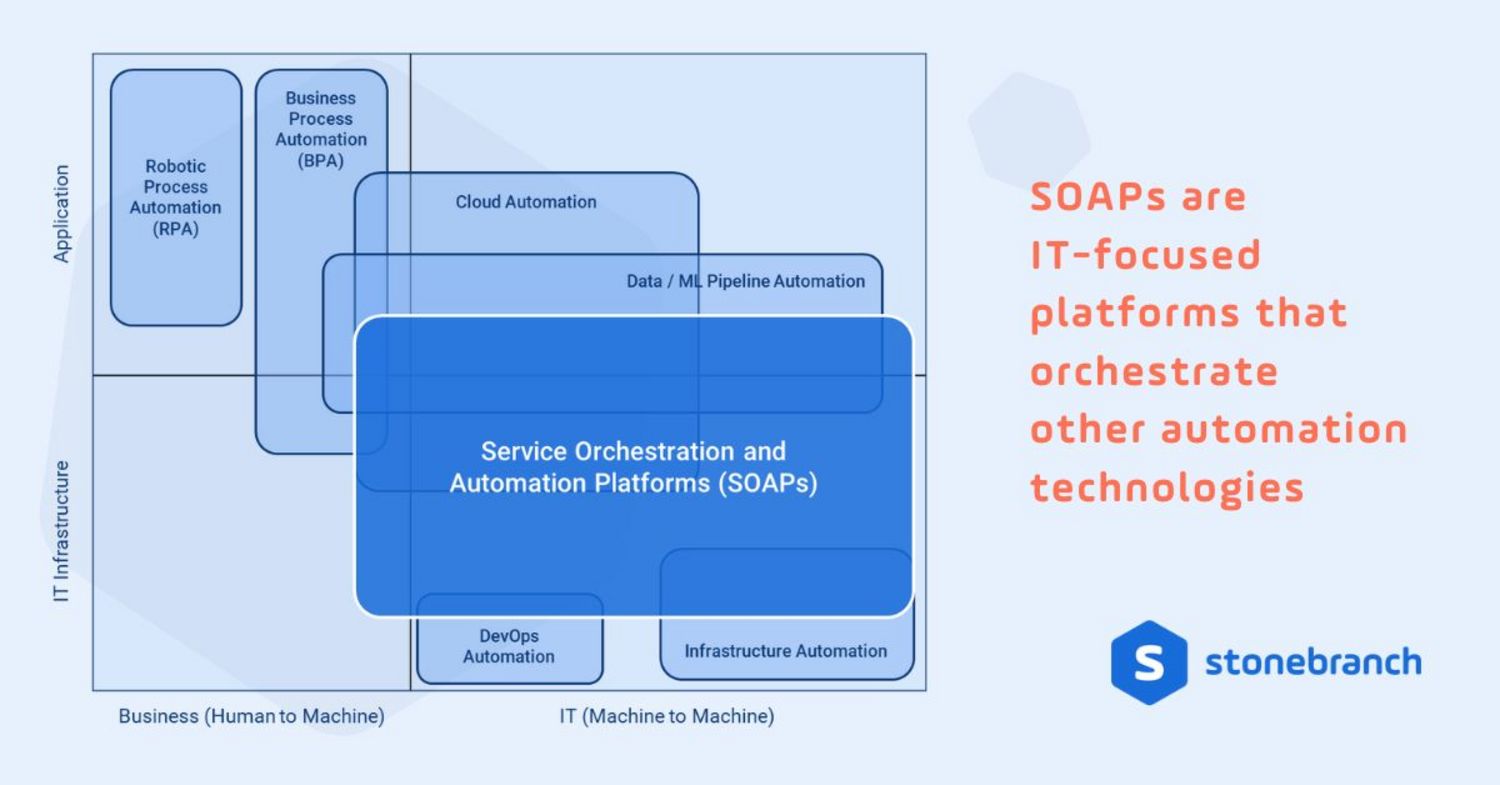
The Four Quadrants of Automation Technologies
The horizontal axis of the matrix represents the spectrum from business-centric to IT-centric automation.
- Business-centric automation focuses on human-to-machine interactions. A common example is IT service management (ITSM) systems, where employees request IT services that trigger backend processes.
- IT-centric automation coordinates workloads among systems and technology landscapes. This is where infrastructure components, cloud environments, and application platforms come together through automated workflows.
On the vertical axis, we map the focus areas between IT infrastructure and business systems.
- IT infrastructure automation manages underlying components such as servers, networks, and cloud platforms.
- Business systems automation involves platforms like ERP, HCM, and CRM systems, where the goal is to automate business functions.
SOAP tools thrive in the bottom-right quadrant of this matrix, where the focus is on IT-centric automation across business systems and infrastructure. This quadrant reflects the evolving needs of modern enterprises: integration across diverse domains and the ability to manage complex, hybrid environments. In addition, SOAPs act as a connective tissue for tools across all four quadrants, enabling seamless coordination across different platforms and systems.
A Unified Approach to Automation
With the right approach, we’ve seen SOAPs unlock significant value for organizations. By evaluating if UAC can fulfill their automation goals, many customers eliminate unnecessary tools, lower costs, and simplify workflows.
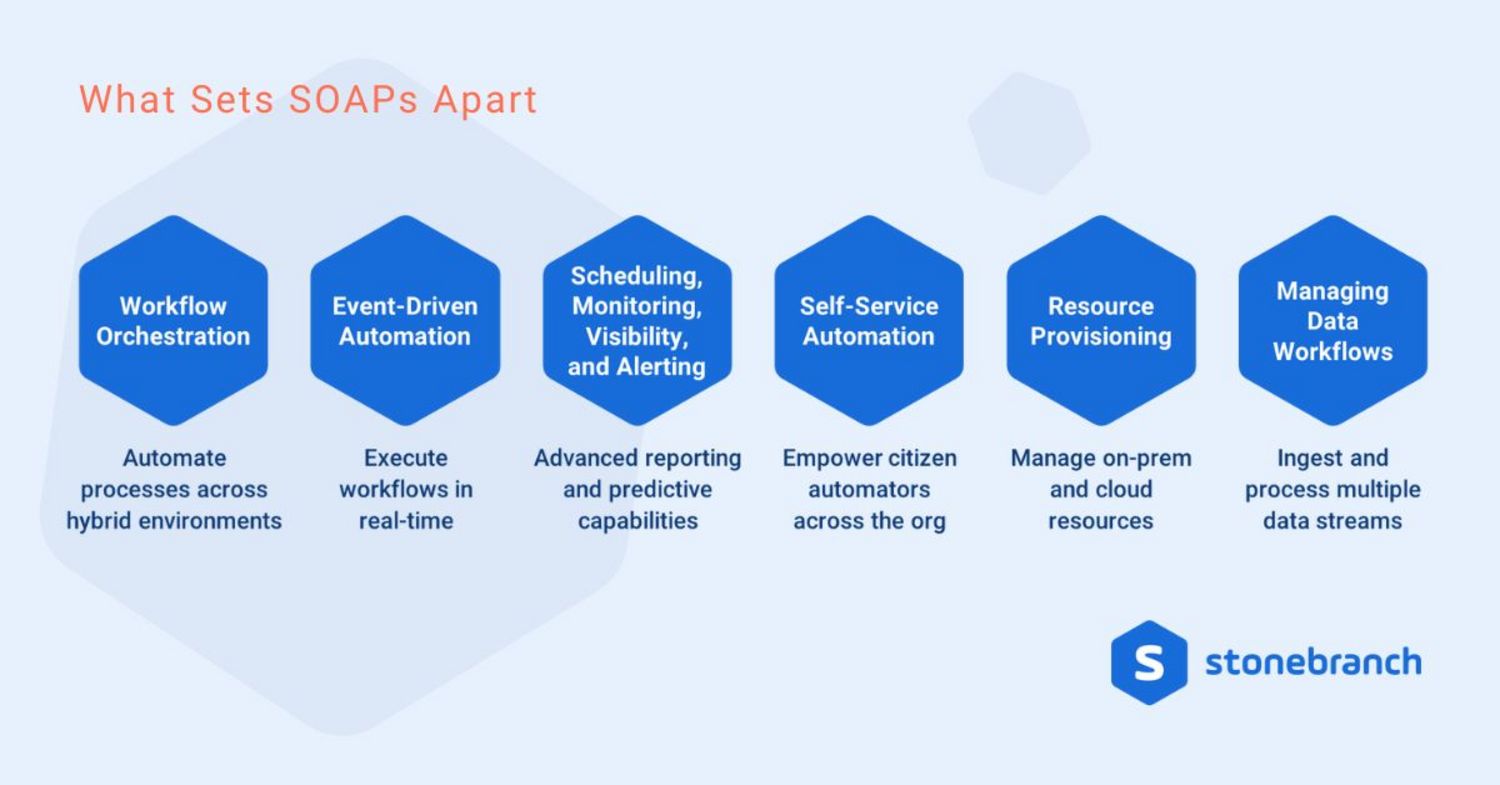
SOAP tools offer several key capabilities that make them invaluable in today’s hybrid IT environments:
- Workflow Orchestration: SOAPs are built to work across different technology landscapes and domains. Whether it’s on-premises, cloud, or hybrid environments, these platforms can automate processes regardless of where the systems reside.
- Event-Driven Automation: Gone are the days of rigid, schedule-based automation. Today’s business processes are dynamic, requiring automation that can be triggered by events across systems or by individuals within the organization. SOAPs make event-driven automation not only possible but easy to implement.
- Scheduling, Monitoring, Visibility, and Alerting: One of the most compelling benefits of a SOAP tool is the ability to manage all process automation from a single platform. Instead of juggling multiple interfaces and tools, IT teams can use a single application to schedule, monitor, and troubleshoot workflows. This reduces the time spent managing automation and ensures a more consistent and reliable approach.
- Self-Service Automation: As automation grows, making it accessible to non-technical users is crucial. Citizen automators — the ability for non-technical users to create and run their own automated processes — has become a key focus for many organizations. With SOAPs, self-service capabilities allow these users to automate tasks without needing deep technical expertise.
- Resource Provisioning: The elasticity of modern cloud and virtualized environments has changed how organizations approach their infrastructure. SOAPs enable teams to provision cloud-based resources on-demand, whether for production or non-production environments, creating more flexibility and responsiveness.
- Managing Data Workflows: In data-driven organizations, managing data workflows effectively is essential. SOAPs facilitate the seamless orchestration of complex data processes across platforms, ensuring that critical data pipelines run smoothly and efficiently, from ingestion to transformation and reporting.
Embracing the Future of Automation with Orchestration
The challenge of tool sprawl won’t go away by itself. In fact, as automation continues to expand, the number of tools deployed across organizations is likely to grow to new heights. However, with the right approach, organizations can turn this challenge into an opportunity.
By addressing tool sprawl head-on, organizations can ensure that technology remains a driver of success, not a source of complexity. A SOAP solution helps simplify the automation landscape, reduce costs, and improve agility. From connecting existing tools to enabling end-to-end, event-driven orchestration to providing a single pane of glass for management and observability, SOAPs offer a unified solution to the challenges posed by tool sprawl.
Start Your Automation Initiative Now
Schedule a Live Demo with a Stonebranch Solution Expert

